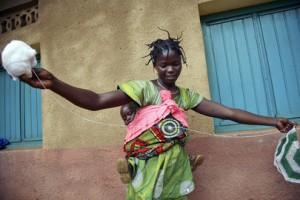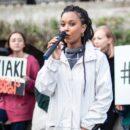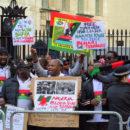The (LRA) conflict: Beyond the LRA lobby & the hunt for Kony… and towards civilian protection – By Kristof Titeca

On the 28th of February this year, an unfortunate incident happened in Garamba National Park, the Lord’s Resistance Army (LRA)-affected area in North-Eastern Congo. A group of Congolese soldiers went on patrol, in order to track LRA-elements; while at the same time a group of (armed) park rangers was patrolling the park. In an area where civilians were present, both groups noticed each other, and both groups considered the other group to be the LRA. The shooting between the two groups, left one Congolese soldier and one civilian dead, and three soldiers and one civilian wounded. The following day, the park rangers were actually attacked by the LRA in the same area, but managed to push them away after heavy fighting. A park ranger later died of his injuries. At least, all of this was the official version of the events, which was communicated by the Congolese soldiers involved. Reports from local civil society groups and international military actors revealed that the above group of soldiers was poaching in the park: they had killed 2 hippopotamus, and had asked civilians to help them cutting and transporting the animals. The park rangers had noticed them, and fighting erupted, which resulted in the above injuries and killings. In retaliation, the soldiers had attacked the park rangers the next day. They also threatened to attack any park ranger leaving the park, or passing through their area. This tense situation also had a strong effect on civilian life: not only were civilians wounded through the above attacks; civil society actors complained that markets could no longer take place, as civilians feared more violence and attacks by the soldiers, who were blaming civilians for the park rangers’ attacks.
These events are illustrative for life in the LRA-affected area in the Democratic Republic of Congo: the fight against the LRA has led to a strong militarization of the area, of which various armed actors are taking advantage. These are not only Congolese soldiers, but also armed poachers and bandits. All of these actors pose a threat to the security of the civilian population. This crucial point is neglected by a number of external interventions in the area, which are principally focused on Kony and the LRA. This approach has again been put in the limelight through the recently launched US War Crimes Rewards Programs, which gives awards of up to $ 5 million for evidence leading to the capture of Joseph Kony and the two other top commanders of the Lord’s Resistance Army. The measure is complementary to previous efforts to stop the LRA violence, such as the Kony 2012 campaign, which also had a specific focus on Kony in order to end the conflict. Both actions explicitly state how they want to end civilian suffering in LRA-affected areas through their actions – Ben Keesey, Invisible Children’s CEO for example explicitly stated in an interview with The Times newspaper, about the Kony 2012 campaign how “The true measure of success for this campaign is if people’s lives are getting better on the ground”.
These Kony- and LRA-driven approaches have two major problems: one, they ignore the complex and multi-faced reality of security threats to people’s lives in LRA-affected areas. The presence of the LRA acted as a catalyzer for these different threats. Some of these threats were already present in this area, but became further empowered through the presence of the LRA. Other threats are inherently related to the fight against the LRA and the militarization of the area. Second, an exclusive focus on “˜hunting’ the LRA obscures these other threats, and makes addressing these more difficult.
The LRA Crisis Tracker is a good example of the limits of this “˜LRA-only’ approach: this tool, developed by Invisible Children and Resolve, collects data on LRA incidents in LRA-affected areas. In analysing the number of LRA attacks, abductions and killings, the Crisis Tracker indeed is a good advocacy tool to highlight the LRA threat – and does a great job in silencing misinformed criticisms that the LRA is no longer active. Yet, the Crisis Tracker in itself presents a flawed image of the security situation, by only focusing on one of the armed threats to the population – the LRA, and not looking at the other threats. The partial nature of these statistics becomes very clear when looking at other data from the area: the “˜protection cluster’ coordinated by the UN refugee agency UNHCR, keeps statistics on “˜protection’ incidents towards civilians in LRA-affected areas in the DRC – these incidents include rape, killing, abduction, looting, and so on. These incidents are collected through international NGOS and local organizations on the ground in the affected areas, and do not only focus on the LRA. In doing so, they show how the lives of civilians are a continuous struggle, in which they are threatened by a variety of armed actors: in 2011, a dramatic 48% of all incidents against civilians were committed by individual Congolese soldiers, while (only) 17% were caused by the LRA. The remaining incidents are caused by bandits (Congolese or South Sudanese), armed poachers (from as far as Libya, Chad or South Sudan) and local authorities (such as the police).
This does mean that the LRA is not an important threat. On the contrary, much of the problems are caused by its presence: many of these armed actors – and particularly the Congolese soldiers – are only present in the area because of the LRA. Although the soldiers’ presence to a certain extent indeed deterred the LRA, the presence of the LRA equally offered a number of opportunities. This sometimes happened in collaboration with civilian actors, but more often, soldiers were preying on the civilian population. Various actors, such as armed bandits and again the Congolese soldiers, have in turn been copying LRA attacks, in order to put the blame on the LRA. In other words, the “˜LRA hunt’ allowed individual armed actors to profit from the situation in various ways – with a strongly negative effect for the population. As shown by local civil society reports, a rather cynical example of this dynamic was the trade in ammunition and weapons by Congolese army actors to the LRA in 2010; something which was found out after two LRA prisoners disclosed how they were receiving supplies from Congolese soldiers.
In their efforts to present a simple and accessible story, the anti-LRA lobby organizations (Invisible Children, Enough, Resolve) neglect an important part of the local security dynamics, and the negative consequences of these for the population. While this “˜LRA only’ view definitely allows to gather funding and attention – as the Kony 2012 video has shown – this view equally leads to a reduced effectiveness in interventions, as they are not equipped to deal with the other threats to people’s lives. Invisible Children’s high-frequency radio’s in LRA-affected areas are a good example of this: these radio’s allow remote communities to seek for help in case of LRA-attacks, and to communicate with other localities. This would have been useful to protect the population from large-scale LRA attacks, such as the 2008 and 2009 Christmas massacres (although it remains unclear how any intervention force could arrive in time). It however is much more difficult to protect the population from the small-scale hit-and-run attacks which the various armed actors in LRA-affected areas are using. And it certainly is much more difficult to protect the population from harassment from individual Congolese soldiers, as it simply is (too) risky for civilians to report on army abuses through these radio posts (as these radio posts are exchanging military information, the armed forces closely monitor them); and as soldiers have on occasions controlled these radio posts. Even when using code language, the operators still fear retaliation. In other words, a particular view on civilian protection in these areas – in which only the LRA is perceived as a threat, not any other groups, and certainly no internal threat – leads to particular interventions, which are ill-equipped to address all suffering, and report all incidents. Given the high rate of incidents with soldiers, this is highly problematic.
Moreover, the “˜LRA only’ narrative has made it more difficult for humanitarian organizations active in the area to rally support and funding for a more holistic approach on civilian protection, which also addresses these other threats. This “˜messy’ image is much harder to sell to the wider public, and much harder to intervene in: the threat is no longer a clearly definable “˜evil’ outsider, but a multiple threat which consists of both insiders (such as individual Congolese soldiers, local bandits) and outsiders (the LRA, foreign bandits, different groups of poachers). Reducing these internal threats is only possible through addressing the behavior of the government soldiers, and re-establishing the judicial system and the general functioning of the state in these marginalized areas. However, and particularly in 2011 and 2012, humanitarian actors were complaining that this dominant “˜LRA only’ discourse made it very hard to find donor money for this: all programs had to be defined as LRA, whilst the reality on the ground is much more complicated and messy. Consequently, a number of humanitarian actors were discontent that they had to emphasize the presence of the LRA in their programs, and not the other groups. As a result, a number of programs were implemented which were specifically targeted towards LRA-effects, but – in a situation of strongly reduced LRA attacks – had relatively little results; while the increased attacks and dangers of other actors were not sufficiently addressed.
In sum, the fight against the LRA does not occur in a vacuum: it leads to a range of abuses, which have been made possible through the fight against the LRA, and which are inherently related to the militarization of the region. A strict focus on the LRA in this “˜messy’ security context, and not on how various actors profit from this situation, further empowers these armed actors, and further helps these abuses occur. A second important point is that the protection of civilians equally does not occur in a vacuum. If organisations such as Invisible Children really want to improve the lives of people on the ground – as their CEO pointed out – realities on the ground should not be sacrificed for simple narratives. It is cynical to single out one threat to civilians (the LRA), while neglecting others, which on a daily basis constitute a major threat for the civilian population.
Kristof Titeca is a Postdoctoral Fellow from the Research Foundation – Flanders (FWO), based at the Institute of Development and Management (University of Antwerp) and the Conflict Research Group (University of Ghent).








[…] This piece was originally published on May 17, 2013 on African Arguments:Â https://africanarguments.org/2013/05/17/the-lra-conflict-beyond-the-lra-lobby-the-hunt-for-kony-and-t…. […]